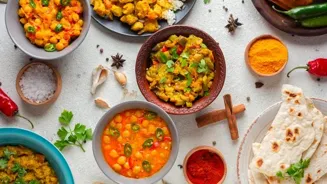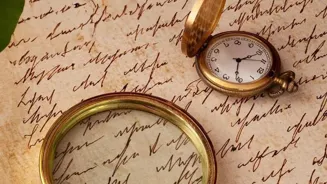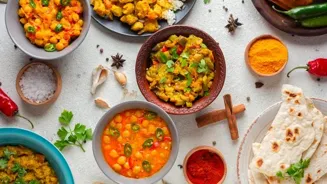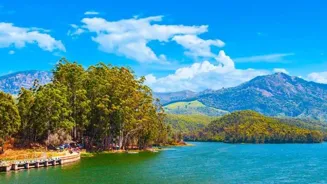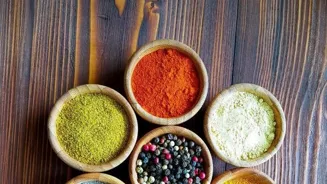Unraveling the Mysteries of Indian Spice Trade: A Historical Odyssey. Discover the exotic journey that shaped global flavors
For centuries, the aroma of Indian spices has wafted across the globe, luring
traders, explorers, and even empires.
The story of Indian spice trade isn't just about commerce; it's a rich tapestry woven with adventure, cultural exchange, and the indelible mark these precious commodities have left on history.
From the ancient Silk Route to modern-day supermarket shelves, Indian spices have shaped the world we know. Understanding this journey gives us a new appreciation for that pinch of turmeric in your dal or the comforting warmth of cinnamon in your chai.
India's diverse geography and ancient spice cultivation expertise made it a global spice hub
The very geography of India contributed to its pivotal role in spice cultivation and trade. The diverse climate, ranging from the tropical coasts of Kerala to the fertile plains of the north, allowed for a wide variety of spices to flourish.
Think of the pepper vines clinging to the hillsides of the Western Ghats, the cardamom pods ripening in the shade, or the ginger roots nestled in the warm earth.
These natural advantages, combined with ancient knowledge of cultivation and processing, meant that India was uniquely positioned to become the world's spice hub.
Over time, local communities honed their expertise, developing specific techniques for growing, harvesting, and drying each spice, adding another layer of complexity and value to the trade.
This deep understanding, passed down through generations, is what made Indian spices so coveted and ensured their consistent quality. That distinct flavor profile could not be replicated elsewhere with the same results.
Indian spices' ancient trade routes shaped global economy
The earliest evidence of Indian spice trade dates back thousands of years. Archaeological findings reveal that spices like cloves and peppercorns were used in ancient Mesopotamia and Egypt, suggesting a vibrant trade network existed even then.
The Silk Route, more than just a path for silk, also carried spices westward, connecting India to the Roman Empire and beyond.
Imagine caravans laden with these precious goods, traversing vast distances, facing perilous journeys, all to satisfy the growing demand for exotic flavors in distant lands.
Literary sources like the "Periplus of the Erythraean Sea," a Greco-Roman navigation guide, vividly describe the ports of India bustling with trade, showcasing the importance of Indian spices in the global economy of the time.
The demand for Indian spices wasn't just about taste; they were also valued for their medicinal properties, perfumes, and preservatives.
European powers revolutionize Indian spice trade in 15th century, reshaping global economy
The arrival of the European powers in the 15th century marked a new chapter in the Indian spice trade. Driven by the desire to bypass the established trade routes controlled by the Arabs and Venetians, European explorers sought direct access to the spice-producing regions of Asia.
Vasco da Gama's voyage to India in 1498 opened up a sea route that revolutionized the spice trade, allowing European merchants to acquire spices directly from their source.
This triggered a period of intense competition between European powers like the Portuguese, Dutch, French, and British, all vying for control of the lucrative spice trade. The quest for spices fueled exploration, colonization, and ultimately, the reshaping of the global map.
Forts, trading posts, and entire empires were built on the back of the spice trade, forever changing the political and economic landscape of India and the world.
British East India Co controlled Indian spice trade, with economic gains and local exploitation
The British East India Company's dominance in the 18th and 19th centuries solidified British control over the Indian spice trade. The company established plantations, regulated prices, and controlled the distribution of spices to European markets.
While this brought immense wealth to the company, it also led to exploitation of local farmers and a restructuring of the traditional spice trade practices. The focus shifted from local consumption and regional trade to satisfying the demands of the global market.
Indian farmers were often forced to grow specific spices for the company at fixed prices, undermining their independence and traditional ways of life. This period represents a complex legacy, characterized by both economic development and social disruption.
India's spice trade legacy endures in modern global cuisine
Today, India remains a major producer and exporter of spices. While the dynamics of the trade have changed significantly, the importance of Indian spices in the global culinary scene remains undeniable.
From turmeric lattes to spicy curries, the flavors of India continue to captivate and inspire chefs and food lovers around the world. Modern technology has transformed the spice industry, with advanced processing techniques, improved transportation, and sophisticated marketing strategies.
But at its heart, the Indian spice trade is still rooted in the same rich traditions and ancient knowledge that made it so significant in the first place.
As we enjoy the taste of Indian spices, we're also savoring a piece of history, a connection to a long and fascinating journey that has shaped our world and the way we experience flavor.

